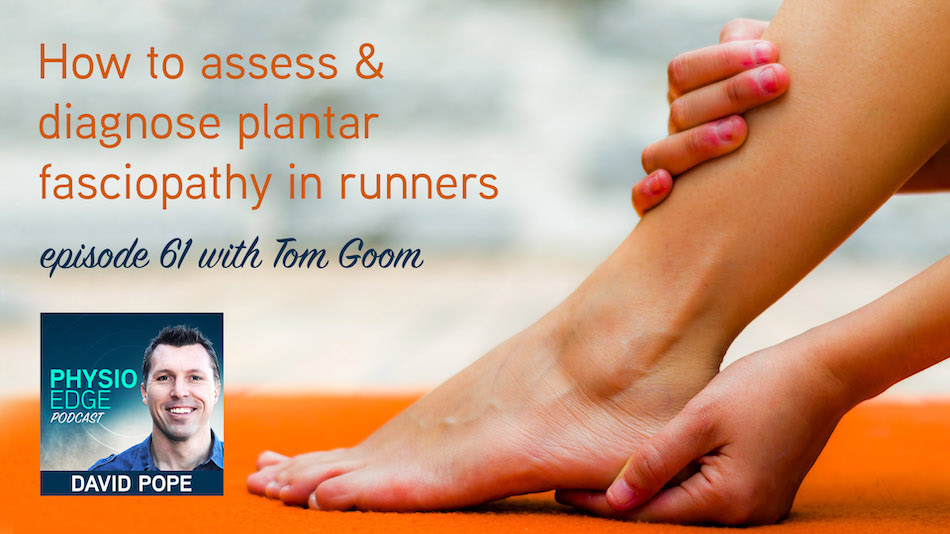
Assessment and diagnosis is vital in planning your plantar fasciopathy treatment program, and successfully returning your patients to activity and running. Structures in the vicinity of the plantar fascia insertion may contribute to plantar heel pain, but require a very different treatment approach. How can you identify other structures that are involved? What questions do you need to ask in the history? How can you perform an examination, and what tests should you perform on patients with plantar fasciopathy?
In episode 61 of the Physio Edge podcast, Tom Goom and David Pope help you discover exactly how you can assess and differentially diagnose plantar fasciopathy.
You will discover:
- Plantar fasciopathy clinical presentation
- How to identify fat pad irritation
- Patterns of calcaneal and navicular bony stress injuries
- How you can identify nerve entrapment and radiculopathy
- Red flags such as spondyloarthropathy
- Questions to ask in your subjective that will guide your diagnosis and treatment
- How to perform an objective assessment
- Tests you need to perform
- Identifying impairments to address during rehabilitation
- When you should perform a running assessment
This podcast follows on from Physio Edge 060 Plantar fasciopathy in runners with Tom Goom
Free running injury assessment & treatment video series available now
Links of Interest
- Download and subscribe to the podcast on iTunes
- Tom Goom on Twitter
- Connect with David Pope on Twitter
- Review the podcast on iTunes
- Like the podcast on Facebook
- Infographics by Clinical Edge
- Get your free trial Clinical Edge membership
- Tom Goom's website & courses
- Tom on Facebook Live Research associated with this episode
- Rathleff et al. 2014. High-load strength training improves outcome in patients with plantar fasciitis: A randomized controlled trial with 12-month follow-up.
- Riel H, et al Is ‘plantar heel pain’ a more appropriate term than ‘plantar fasciitis’? Time to move on








